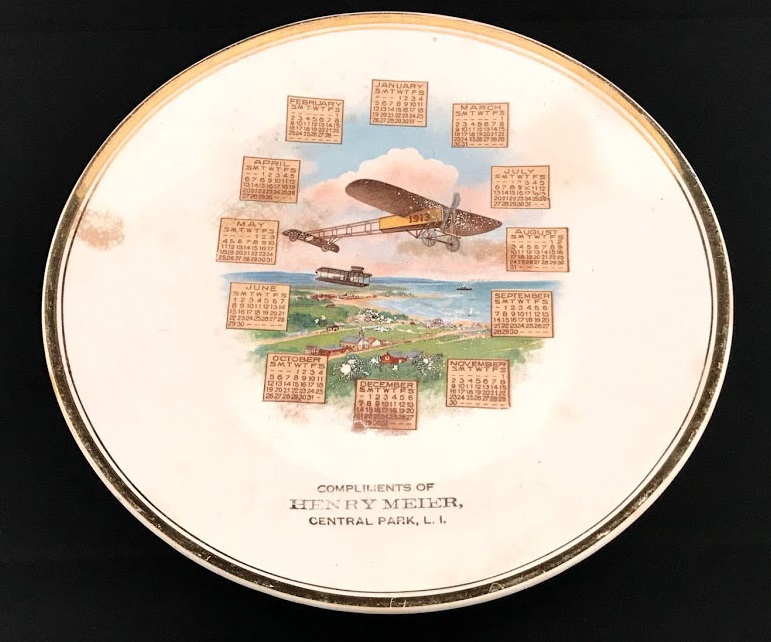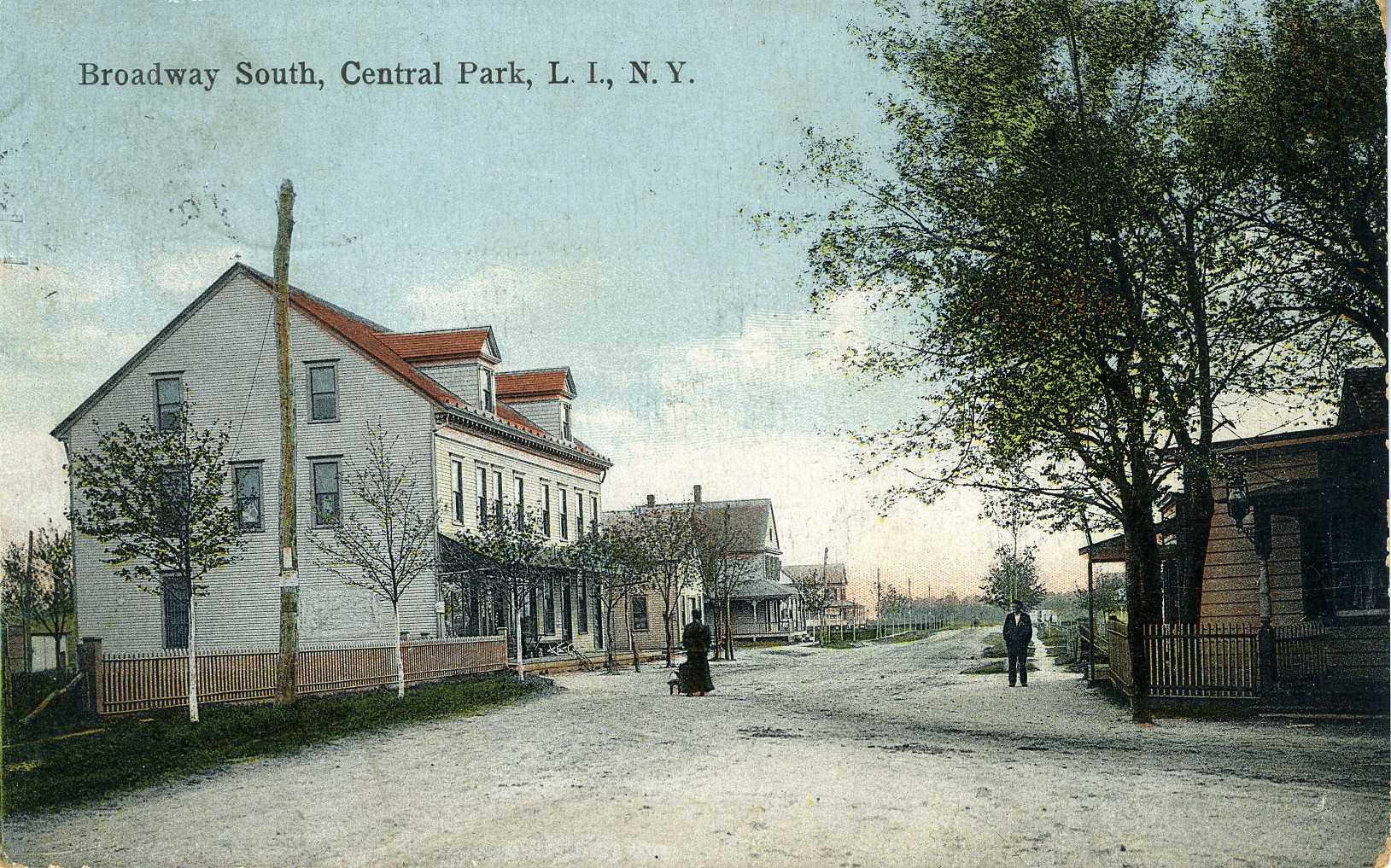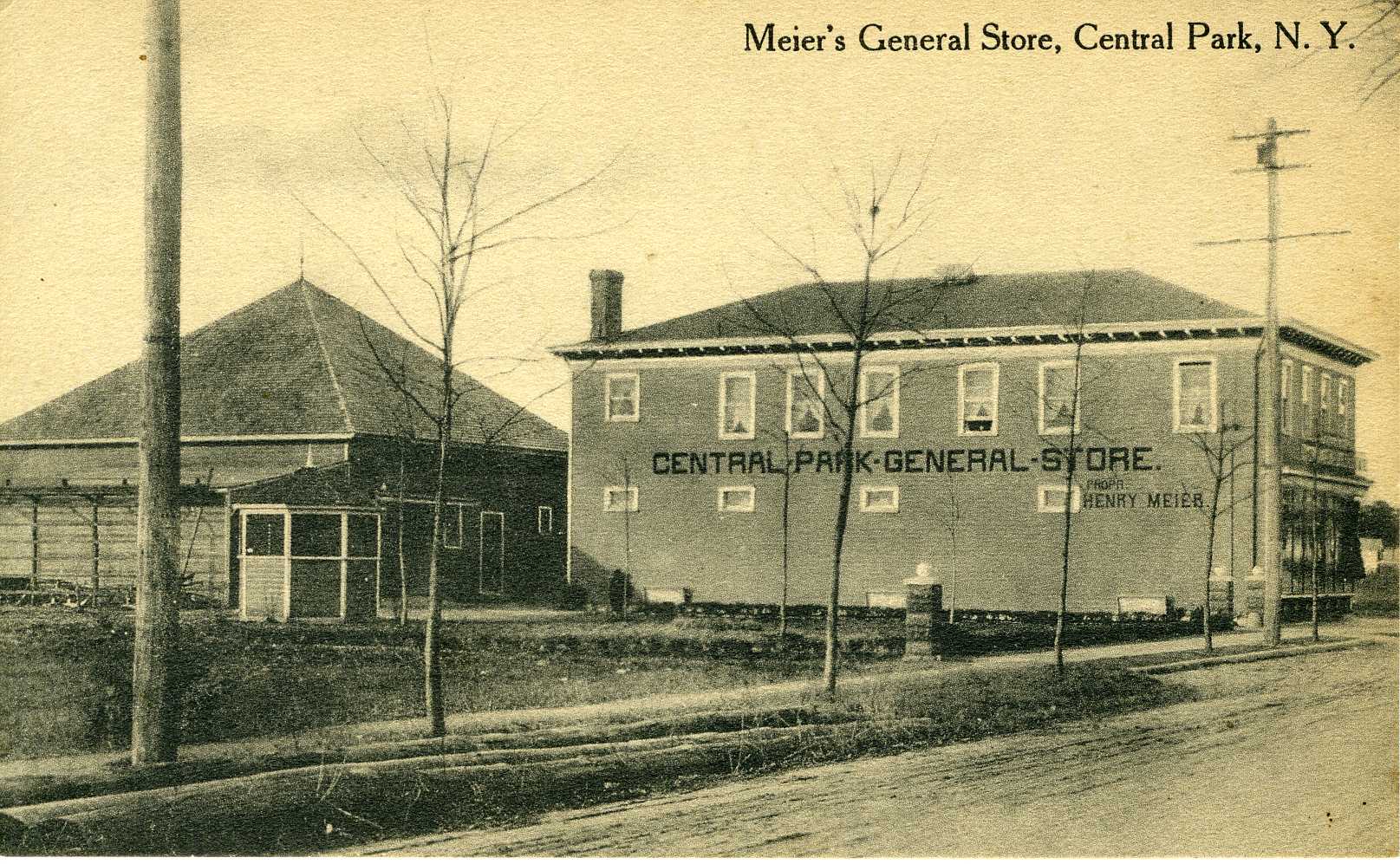Preservation Long Island is proud to be the steward of a robust collection of decorative arts and material culture that reveal life on Long Island long ago. Guest blogger and collections volunteer, Gary Hammond, explores the history behind one intriguing object in Preservation Long Island’s collection. Edited by Lauren Brincat, Curator, Preservation Long Island.

What can one learn from a plate? Quite a lot if you ask the right questions. This plate, generally known as a calendar plate, is marked in gold “Compliments of Henry Meier, Central Park, L.I.” and dated 1913. Not intended for use at the dining table, it was an end-of-the-year appreciation gift to valued customers of Henry Meier. These promotional collectibles were popular across the United States during the early twentieth century and often featured decorative scenes or motifs with calendars and the name of the sponsoring merchant.
Why are there airplanes on this plate?
The social impact of aviation goes back to the early ballooning attempts of the eighteenth century. Balloons and later airplanes were common motifs on ceramics, artwork, textiles, and even furniture. In 1913, the year this plate was created, airplanes were still a novelty—the Wright Brothers completed their first powered flight only a decade earlier. A few years later, Nassau County became the “Cradle of Aviation” due to the flat, treeless Hempstead Plains which allowed flying fields to be built, aircraft to be constructed, and flight records to be created and broken.
Depicted on the plate’s foreground is a Bleriot-type “aeroplane” in flight, with a Wright-type aircraft in the background. In 1909, Frenchman Louis Bleriot (1872–1936) was the first person to cross the English Channel in an aircraft of his own design. In October of 1910, the Wright Brothers visited Long Island for the International Aviation Tournament at Belmont Park where a Wright-type plane was flown.

Central Park on Long Island?
Postal historians consider Central Park, Long Island to be a “DPO,” or Discontinued Post Office, but the community’s history goes back hundreds of years. In 1695, a 15-square mile piece of central Long Island became known as the Bethpage Purchase after its acquisition by Quaker Thomas Powell. This area would eventually become Farmingdale, Bethpage, Plainedge, Plainview, and Old Bethpage. By the mid-1800s, many areas of Long Island were developed due to the location of railroad depots. The local stop was called Jerusalem Station, but confusion with Jerusalem South (Wantagh) necessitated the creation of a new name. In March of 1867, both the name of the post office and railroad station became “Central Park,” possibly due to its location midway between New Hyde Park and Deer Park.
It is said that confusion between Central Park, Long Island and Central Park in Manhattan brought about discussion for another name change in the 1890s, but the community remained Central Park until the opening of Bethpage State Park in 1936. A committee headed by William J. Ahern felt renaming the area to reflect the presence of the park would promote property values. As a result, at 5 PM on September 30, 1936, the last Central Park letter was canceled, and the following morning, the “new” post office stamped its mail “Bethpage, N.Y.” Despite protests, the original Bethpage community was renamed “Old Bethpage.”
Who was Henry Meier?

Henry Meier and his family can easily be located in census records. According to the 1900 United States Census, Henry Meier and his wife, Sophie, were both born in Germany in 1872. They immigrated to the United States in 1886 and were married sometime around 1895. On June 1, 1900, they were living at 15 Cypress Avenue in Queens. Henry was a grocer.
By 1910, the Meier family was living on Broadway in Central Park with their two children: eight-year-old son Irving and newborn daughter, Ruth. According to the Central Park Historical Society Encyclopedia in 1908, Henry purchased the three-story Sengstacken Department Store on Broadway. The building, built by Henry Sengstacken in 1903, still stands just southeast of the L.I.R.R. crossing. Meier operated his business from this location until 1911 when he sold it to another general store merchant and moved farther up the street to operate the Central Park General Store. By 1915, the Meiers moved away from Central Park to Farmingdale, where the 43-year-old former merchant worked as an auto garage employee.
So, what “secrets” does a simple plate hold? Many, if one is willing to do some digging into the past!



